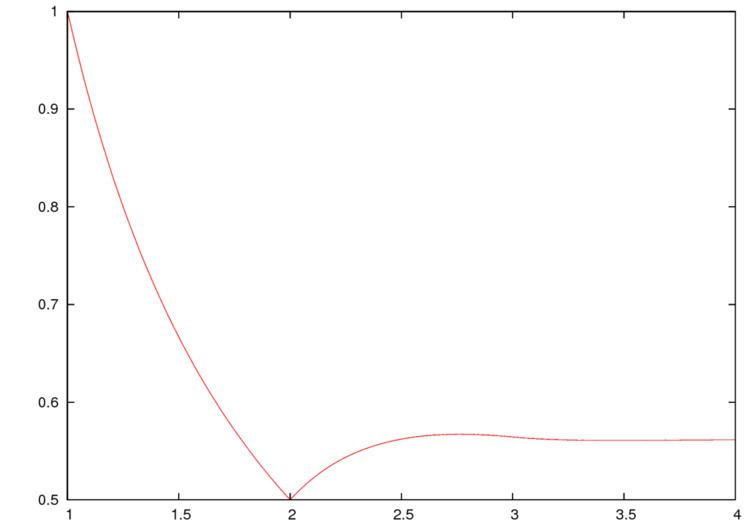 | ||
The Buchstab function (or Buchstab's function) is the unique continuous function
Contents
In the second equation, the derivative at u = 2 should be taken as u approaches 2 from the right. It is named after Alexander Buchstab, who wrote about it in 1937.
Asymptotics
The Buchstab function approaches
where ρ is the Dickman function. Also,
Applications
The Buchstab function is used to count rough numbers. If Φ(x, y) is the number of positive integers less than or equal to x with no prime factor less than y, then for any fixed u > 1,
